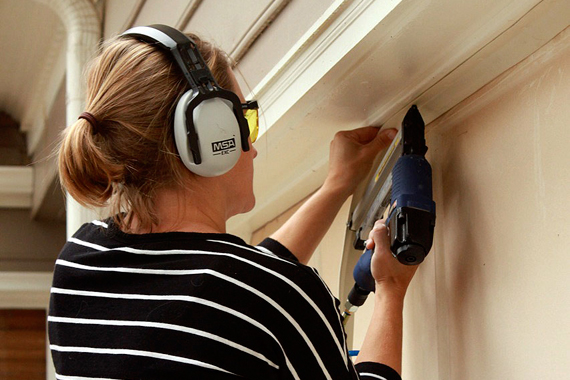Weather stripping on windows and doors protects the home from air leaks while increasing comfort and saving energy. But as weather stripping ages, it loses its effectiveness.
Stay ahead of the game by checking for worn-out weather stripping and replacing it.
Identifying Worn Weather Stripping
Weather stripping deteriorates due to age, friction, and exposure to the elements. It also can be damaged by people, pets, and pests. At least once each year, inspect your windows and doors to check for air leaks that indicate your weather stripping isn’t doing its job.
- Self-adhesive foam tape loses its grip over time, causing it to pull away from the door or window frame — or fall off completely. Foam also can lose its resilience, no longer springing up to fill the gap.
- Rubber and vinyl weather stripping becomes dry, brittle, and cracked. Over time, it can also lose its shape and effectiveness.
- Spring-metal V-shaped weather stripping bends out of shape, cracks in spots, and comes loose thanks to missing nails.
How to Remove Old Weather Stripping
For peel-and-stick-type weather stripping, simply pull the foam strips off the door or window by hand. Stripping that is fastened in place with nails or screws requires a more tedious process of locating and removing all the fasteners.
Options for New Weather Stripping
There’s no shortage of weather stripping options at hardware stores and home improvement centers. As is often the case, the cheaper and easier the product is to install, the less effective and durable it probably is over time.
Adhesive-backed foam tape is inexpensive — costing less than a buck a foot — and peel-and-stick types are easy as pie to install. It works best where the bottom of a window sash closes against a sill, or a door closes against a doorframe. It’s the compression that produces the seal. Don’t expect this product to survive longer than 3 to 5 years.
V-shaped weather stripping, sometimes called tension-seal weather stripping, is the best option for the side channels of a double-hung window or a tight-fitting door. This product springs open to close gaps and plug leaky windows and doors.
Inexpensive peel-and-stick V-shaped vinyl (as little as $0.50 per foot) is easy to install but won’t last much longer than foam tape. More expensive copper or bronze styles cost as much as $2 per foot and must be nailed into place, but they look better and will last decades.
Tubular rubber or vinyl gaskets prove the most effective for sealing large and irregular gaps, such as around an old door. These hollow tubes are large enough to plug big gaps but soft enough to compress nearly flat. Types that are nailed in place last longer than peel-and-stick varieties. Prices range from less than $1 per foot for peel-and-stick to $1.25 per foot for nail-in-place.
Prepare the Surface
Before installing any new weather stripping, start with a smooth, clean, and dry surface. Remove all old adhesive using an adhesive cleaner and perhaps a light sanding. Fill and sand old nail holes. If old screw holes can’t be reused, fill and sand those as well.
Installation Tips
- Some peel-and-stick types should only be applied when the temps are at least 50 degrees. Check the product label.
- Start with one small area to make sure the door or window opens and closes without difficulty before completing the entire job.
- Measure twice before cutting to prevent mistakes and waste.
- Cut rubber and vinyl varieties with shears or a utility knife, and metal types with tin snips. Be careful not to bend the thin metal while cutting it.
- Make sure to face the opening of V-shaped weather stripping out toward the elements to prevent moisture from getting inside.
Installing Weather Stripping
Adhesive-style weather stripping: Remove the backing and press firmly in place. Removing the backing as you go helps prevent the sticky part of the strip from accidentally adhering to something it shouldn’t.
Nail-in weather stripping: Fasten the strips in place by nailing through the pre-punched holes. For double-hung windows, you’ll need to install the lower half, drop the sash, and then install the upper half.
Related:
